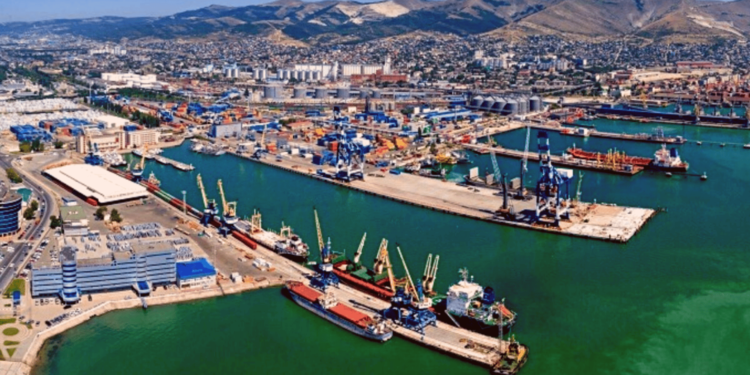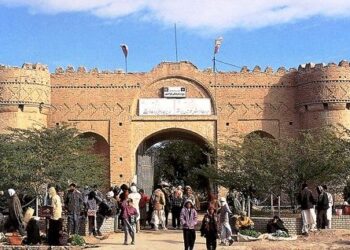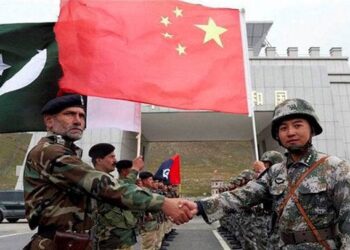No products in the cart.
Increasing Strategic Importance of Gwadar Port: Will It Become China’s New Military Base?
President Xi Jinping of China introduced the Belt-Road Project in 2013, which aims to connect China to Africa, Europe, and beyond. Gwadar Port is an essential component of the China-Pakistan Economic Corridor (CPEC), which is the project’s focal point. The corridor, which spans billions of dollars in infrastructure developments and includes road and transportation linkages, connects China and Pakistan. Gwadar Port is strategically and militarily important for both Beijing and Islamabad in this regard. Furthermore, Gwadar Port is a strategic location in Pakistan’s Balochistan Province that can serve as a geostrategic hub for China’s commercial, political, and military activity in the North Indian Ocean.
China’s major motivation for wanting to build a port in Gwadar is not commercial. The port is crucial due to China’s internal and foreign security policy. Furthermore, the port is situated at the mouth of the Strait of Hormuz, on the Arabian Sea’s shore, and close to the Persian Gulf. It is also a crucial location since it is the world’s third biggest port.
Given China’s desire to improve its access to the Indian Ocean, Gwadar Port is becoming increasingly important in Beijing. Furthermore, because it is adjacent to many vital maritime routes via which the great majority of oil shipments in the globe travel, the expansion of this port appears to be particularly essential for the storage of oil from the Middle East. The Port of Gwadar, for example, is barely 400 kilometers from the Strait of Hormuz, which transports nearly 40% of China’s imported oil.[1]
The port is also beneficial to Beijing since it diversifies oil delivery lines, spans tight sea passages in South Asia, and reduces shipping time significantly. China sends commodities made in the interior to the rest of the world via Kashgar, a land and seaport. There are significant benefits for Pakistan as well in this scenario. When it comes to assuring national and regional prosperity, the Gwadar Port is vital for the Islamabad administration. The port, on the other hand, advantages Pakistan in terms of improving relations with China as well as having Chinese goodwill with India. Gwadar Port is also seen by China as a surveillance post for nautical activity in the Arabian Sea and the Indian Ocean.
Despite the fact that there are several infrastructure projects associated with CPEC, the Beijing administration appears to be primarily reliant on the Gwadar Port project. The fact that China changed a 230-million-dollar loan into a grant in 2015 as part of the building of Gwadar Airport demonstrates the strength of this connection.[2] In addition, China has converted a $140 million loan for a highway project connecting Gwadar to Pakistan’s coastline route into an interest-free loan.[3] Beijing, on the other hand, has taken a different approach to other CPEC projects. In this scenario, it is reasonable to conclude that China places a high priority on Gwadar. Gwadar Port will also become an important commercial hub for China’s economic links with North Africa, Sub-Saharan Africa, and the Middle East if the corridor in question is built as part of the Belt-Road Project.
In August 2017, China’s sole military post in the world, Djibouti Installation, became operational; the base was built in response to economic developments in the region. Gwadar Port differs from Djibouti in a number of ways. The port, for example, is a departure point for China. It is not, however, confined to providing a direct link between China and the Indian Ocean. Because the growth of the Xinjiang Uyghur Autonomous Region is also being considered at this time. While Djibouti is an essential stop on China’s Belt-and-Road Initiative, Gwadar is in a far more crucial location than Djibouti. Because China is expected to offer transportation to the aforementioned oceans via Gwadar. Gwadar Port can accommodate three ships with a combined weight of 50 thousand tons and a length of 200 meters.[4] The port’s anticipated yearly capacity is 137 thousand container cargoes and 868 thousand general cargoes; the Islamabad management has indicated that %91 of the port’s income would go to China Overseas Ports Holding Company, which will also run the port’s commercial activities.[5]
Due to the mentioned characteristics and geostrategic position, Gwadar is a pivotal point in China-Pakistan ties. It’s also a possible location for China’s next overseas military facility. The port, which is geographically near to China, is also adjacent to the Indian Ocean, the Strait of Hormuz, and the Persian Gulf. It also plays an important role in providing military security for China’s commercial interests.
Furthermore, Gwadar is a fantastic choice for China to improve its connections with Pakistan and build a regional balance, in contrast to India’s increasing relations with the United States and its proximity to China. As a result, the US government believes Gwadar will be China’s new military base.
According to the research conducted by Pentagon named as Military and Security Developments Including the People’s Republic of China: “A more robust military basis would enable China to extend its military might and capabilities to farther areas,”. As a result, China’s military logistical demands are met by access to commercial ports throughout the world and the restricted number of People’s Liberation Army (PLA) supply facilities at commercial ports.” has been summoned.[6] As can be deduced from this, Gwadar is one of the bases China is expected to establish, alongside the base in Djibouti, as part of its good relations with Pakistan and shared strategic goals.
As a result, Gwadar Port’s prominence is growing by the day. As a result of this circumstance, Gwadar will be in the forefront of the military outposts that China plans to build. Gwadar might be a viable replenishment and transfer destination for PLA equipment and people if the relevant infrastructure improvements are completed. In this sense, the geographical advantage of Gwadar is also essential for Beijing in lessening its reliance on the Malacca Strait. Furthermore, the aforementioned port can serve as a strategic location for monitoring the activities of the Quadruple Security Dialogue (QUAD), which was formed by Japan, India, the United States, and Australia. The port’s importance will grow in the coming years as China seeks to weaken the power of India and the United States in the area and more readily open up to the Middle East, Africa, and the West. As a result, Gwadar Port might become China’s new military base.
[1] Isaac Kardon et al., “China Maritime Report No. 7: Gwadar: China’s Potential Strategic Strongpoint in Pakistan”, CMSI China Maritime Reports, 7, 2020, p. 12-13.
[2] Nader Habibi-Hans Yue Zhu, “What CPEC Means for China’s Middle East Relations”, The Diplomat, https://thediplomat.com/2020/01/what-cpec-means-for-chinas-middle-east-relations/. (Date of Accession: 05.02.2022).
[3] “China Converts $230m Loan for Gwadar Airport into Grant”, The News, https://www.thenews.com.pk/print/14833-china-converts-230m-loan-for-gwadar-airport-into-grant, (Date of Accession: 09.02.2022).
[4] Kardon et al., a.g.m., p. 13.
[5] Ibid.
[6] “Military and Security Developments Involving the People’s Republic of China 2020”, ABD Savunma Bakanlığı Raporu, 2020, https://media.defense.gov/2020/Sep/01/2002488689/-1/-1/1/2020-DOD-CHINA-MILITARY-POWER-REPORT-FINAL.PDF, (Date of Accession: 10.02.2022), p. 123.
Please login to join discussion
easyComment URL is not set. Please set it in Theme Options > Post Page > Post: Comments





![Khuzdar (Brahui/Balochi: قصدار; Urdu: خضدار, pronounced ['xʊzd̪ɑːɾ]) is the capital city of the Khuzdar District in the central part of the Balochistan province of Pakistan. Khuzdar is the 3rd-largest city of the Balochistan province and the 48th-largest city of Pakistan by population according to the 2017 census. Historically, Khuzdar was the main city and capital of the Jhalawan province of the Khanate of Kalat. From October 1952 to 1955, it became part of the Balochistan States Union. In 1955, Khuzdar became the capital of the newly formed Kalat Division. Currently, it is the largest Brahui-speaking city.[2][3][4]](https://www.balochmedia.org/wp-content/uploads/2023/10/licensed-image-350x250.jpeg)


